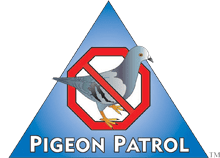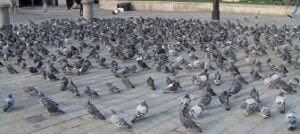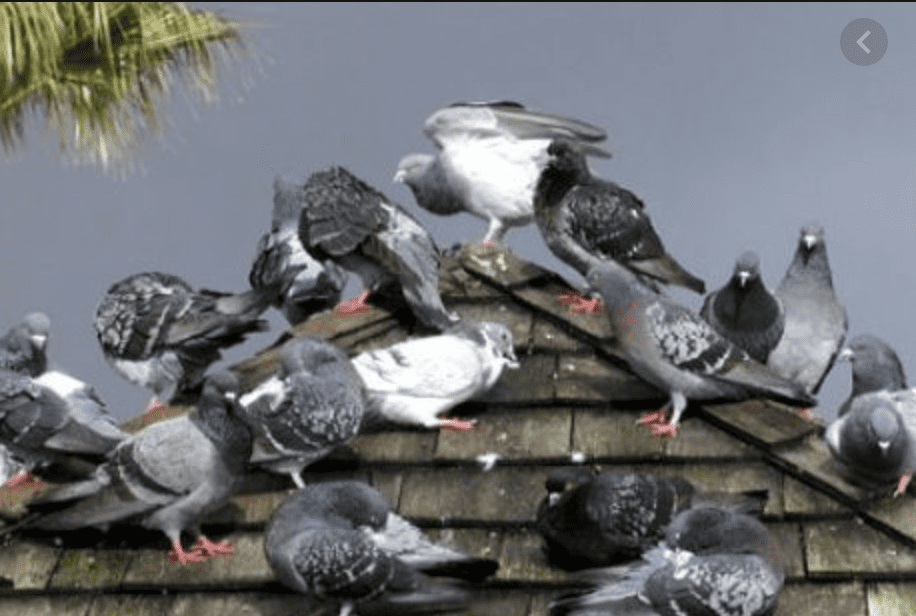
by Pigeon Patrol | Jun 28, 2021 | Pigeon Patrol's Services, Pigeon Predators, Pigeons, Pigeons in the News, Raccoons, Sparrows, UltraSonic Bird Control
Pigeons have been living alongside humans for thousands of years, and have adapted their lifestyle to urban living very successfully. In their natural habitat, they would nest on the sides of tall rocky cliffs. Balconies and ledges on apartment buildings are very similar, so pigeons often choose to nest in these familiar places.
What to do if pigeons are nesting on the balcony
Be patient with a family of pigeons
If the babies have already hatched, really the only thing you can do is wait for them to grow up and fly away. Don’t worry — baby pigeons grow up very quickly! The time between when they hatch from the egg to when they fly away from their nest is usually less than 4 weeks. Once they leave, the babies don’t come back to the nest again.
The parents may try to start another nest in the same spot, even before the first babies have grown up and flown off. Read on to find out how to keep them from nesting on your balcony in the future.
Can’t I just move the nest?
No. Pigeons are very location-specific when it comes to their nest site. Moving the nest over even a few feet — say to a neighbouring balcony — can cause the parents to abandon the nest.
Baby pigeons NEED their parents — they cannot survive without them. Their parents feed them, keep them warm, and even after they’ve left the nest mom and dad show them how to fly, escape from predators, and integrate with the flock.
If you take the babies off of your balcony and move them, even if it’s to a “nice” spot like the local park, they will die. The best thing to do is to let the parents raise this one set of babies. It will take less than a month, they grow up so fast. Once the babies have flown away, you can prevent the pigeons from nesting again in the future.
Keep things tidy
Clean up or put away any things you might be storing on your balcony that are providing shelter or hiding spots for the pigeons to nest. Sweep away any feces or nesting material. It’s fine to do this cleaning while the babies are still on the balcony, just stay away from the exact spot the nest is in.
Remember, the parent pigeons may lay a new set of eggs before the first babies are grown up and gone. You will have to be diligent and go outside every day to sweep away any fresh nesting material. Eventually, the pigeons will get the message that your balcony is not a good place to nest, and they’ll go elsewhere.
What if they lay another set of eggs?
If they do lay a new set of eggs, provided you know that they were laid less than a week ago, it’s fine to dispose of them. We recommend taking them to the local park and hiding them under a bush – that way they can go back to being a part of nature.
If there is a new set of eggs and you’re not sure when they were laid, or you know they’re over two weeks old, we recommend leaving them be and letting the parents raise that brood. Pigeons usually incubate their eggs for about 3 weeks, and then the babies take about 4 weeks to grow up after hatching.
How to keep pigeons from nesting in the future
There are a few different things you can try to make your balcony less attractive to pigeons looking for a place to nest. Remember to wait until AFTER the babies have grown up and flown away before implementing any of these measures. You don’t want to separate the babies from their parents – they will die without their mom and dad.
Keep things tidy
Keeping things tidy and uncluttered is the first step. Pigeons like to choose a sheltered nest spot, so they like furniture and storage items to hide behind. Going out every day and sweeping off any new nesting material is the best thing you can do to prevent pigeon nests. Even just your presence out on the balcony will be enough to discourage many pigeons from nesting. We usually find that nests are made when no one is using the balcony, either early in the season or when the occupants have been out of town for a while.
Keep pigeons from perching
Adult pigeons like to perch on the railing of their nest-site balcony, so they can look around and spot any nearby predators. If you make it impossible to perch on the railing, they’ll usually find somewhere else to go.
We recommend a single length of wire or heavy gauge fishing line. Secure the line tautly about 2-3 inches above and parallel to the balcony railing. Tying it to nails or screws at either end can work. Pigeons aren’t technically perching birds, so it’s hard for them to stand on a piece of wire so thin. They won’t want to build their nest on a balcony where they can’t look out for predators.
Commercial flexible pigeon coils and wires can also work, but will be more expensive to install. We never recommend the use of sticky deterrents, because they can harm both pigeons and other species of birds.
Scare the pigeons away from the balcony
The best thing to scare pigeons away from a balcony is frequent human presence. We usually find that nests are made when no one is using the balcony, either early in the season or when the occupants have been out of town for a while.
You can also use visual deterrents to keep pigeons away from your balcony. Strips of shiny wrapping paper blowing in the breeze, old CDs hanging from string, and colourful spinning pinwheels are some cheap and easy options. Any visual deterrent will be more effective if you move it around or change it up regularly.
And no, those plastic owls don’t really work. At least not for pigeons.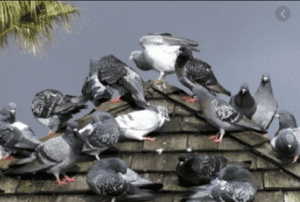
Be careful with pigeon netting
Completely netting in a balcony or ledge can be a very effective way of keeping pigeons from nesting or roosting in that spot. However, pigeon netting MUST be professionally installed and regularly maintained! When pigeon netting gets loose and floppy, it becomes a danger to pigeons, hawks, sparrows, and any other birds that might fly into it and get tangled up.
It is also important to wait until any active nests are finished and all babies have flown away before installing pigeon netting. If the babies are separated from their parents, they will die.
Source
Pigeon Patrol Products & Services is the leading manufacturer and distributor of bird deterrent (control) products in Canada. Pigeon Patrol products have solved pest bird problems in industrial, commercial, and residential settings since 2000, by using safe and humane bird deterrents with only bird and animal friendly solutions. At Pigeon Patrol, we manufacture and offer a variety of bird deterrents, ranging from Ultra-flex Bird Spikes with UV protection, Bird Netting, 4-S Bird Gel and the best Ultrasonic and audible sound devices on the market today.
Voted Best Canadian wholesaler for Bird Deterrent products ten years in a row.
Contact us at 1- 877– 4– NO-BIRD, (604) 585-9279 or visit our website at www.pigeonpatrol.ca
Pigeon/Pigeon Patrol / Pigeons Roosting / Vancouver Pigeon Control /Bird Spikes / Bird Control / Bird Deterrent / Pigeon Deterrent? Surrey Pigeon Control / Pest /Seagull deterrent / Vancouver Pigeon Blog / Birds Inside Home / Pigeons in the cities / Ice Pigeons/ What to do about pigeons/ sparrows , Damage by Sparrows, How To Keep Raccoons Away, Why Are Raccoons Considered Pests/ De-fence / Pigeon Nesting/ Bird Droppings / Pigeon Dropping/ woodpecker control/ Professional Bird Control Company/ Keep The Birds Away/ Birds/rats/ seagull/pigeon/woodpecker/ dove/sparrow/pidgeon control/pidgeon problem/ pidgeon control/flying rats/ pigeon Problems/ bird netting/bird gel/bird spray/bird nails/ bird guard
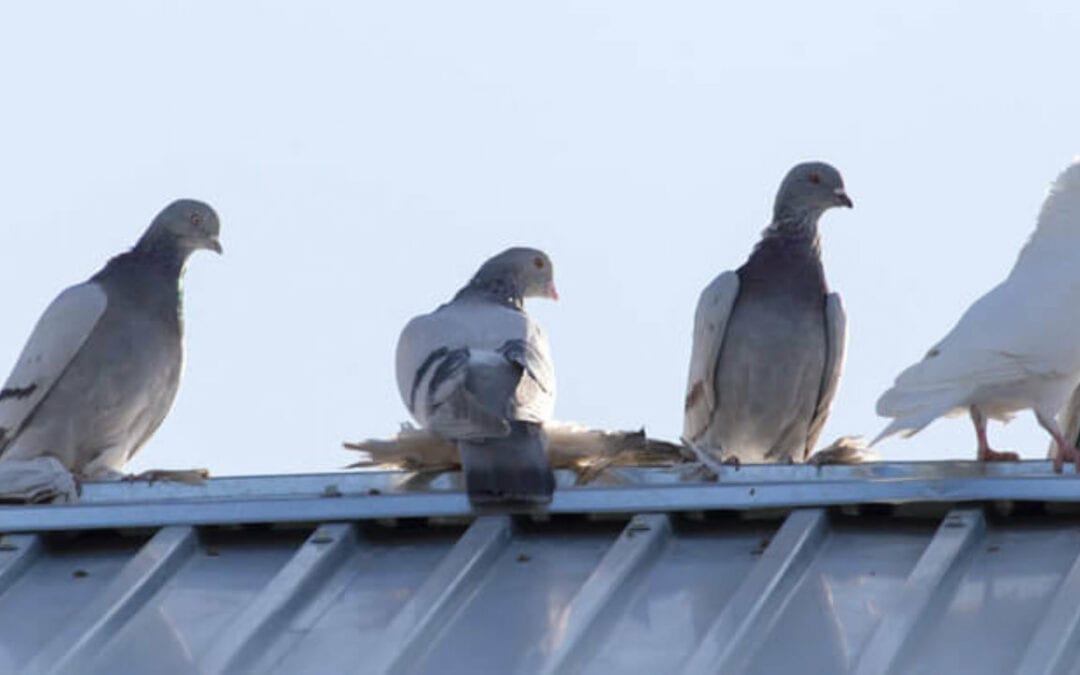
by Pigeon Patrol | Jun 28, 2021 | Pigeon Patrol's Services, Pigeon Predators, Pigeon Spikes, Pigeons, Pigeons in the News
Birds do not have teeth. Without teeth, a bird cannot chew its food down to bits in its mouth like humans do. As detailed in the textbook Ornithology by Frank B. Gill, birds must instead rely on the muscular stomach-like pouch called the gizzard to crush down their food. Many species swallow stones and grit to aid in digestion. These stones remain in the gizzard and crush the food as the gizzard contracts. From a functional perspective, gizzard stones in birds are the equivalent of teeth in humans. When a gizzard stone becomes too smooth to do its job, the bird regurgitates the stone or passes the stone down and out through its digestive tract. Species that do not swallow stones are able to use the sheer muscle power of their gizzards to grind down their food. Birds do not have teeth because the teeth and the jaw bone to support them are too heavy for efficient flight. Many birds have a series of notches in their beak or spikes on the inside of their beak or tongue. These notches and spikes are not true teeth as they are not used to crush down their food. Instead, these features are used to get a good grip on the prey so that it does not escape. In ancient evolutionary history, there were birds with true teeth. Known as odontornithes, these animals are no longer alive today.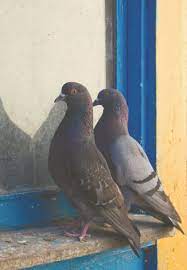
Source
Pigeon Patrol Products & Services is the leading manufacturer and distributor of bird deterrent (control) products in Canada. Pigeon Patrol products have solved pest bird problems in industrial, commercial, and residential settings since 2000, by using safe and humane bird deterrents with only bird and animal friendly solutions. At Pigeon Patrol, we manufacture and offer a variety of bird deterrents, ranging from Ultra-flex Bird Spikes with UV protection, Bird Netting, 4-S Bird Gel and the best Ultrasonic and audible sound devices on the market today.
Voted Best Canadian wholesaler for Bird Deterrent products ten years in a row.
Contact us at 1- 877– 4– NO-BIRD, (604) 585-9279 or visit our website at www.pigeonpatrol.ca
Pigeon/Pigeon Patrol / Pigeons Roosting / Vancouver Pigeon Control /Bird Spikes / Bird Control / Bird Deterrent / Pigeon Deterrent? Surrey Pigeon Control / Pest /Seagull deterrent / Vancouver Pigeon Blog / Birds Inside Home / Pigeons in the cities / Ice Pigeons/ What to do about pigeons/ sparrows , Damage by Sparrows, How To Keep Raccoons Away, Why Are Raccoons Considered Pests/ De-fence / Pigeon Nesting/ Bird Droppings / Pigeon Dropping/ woodpecker control/ Professional Bird Control Company/ Keep The Birds Away/ Birds/rats/ seagull/pigeon/woodpecker/ dove/sparrow/pidgeon control/pidgeon problem/ pidgeon control/flying rats/ pigeon Problems/ bird netting/bird gel/bird spray/bird nails/ bird guard
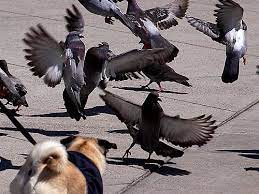
by Pigeon Patrol | Jun 21, 2021 | Pigeon Patrol's Services, Pigeon Predators, Pigeon Spikes, Pigeons, Pigeons in the News, Raccoons
It has long been recognized that birds possess the ability to use the Earth’s magnetic field for their navigation, although just how this is done has not yet been clarified. However, the discovery of iron-containing structures in the beaks of homing pigeons in a new study1 by Gerta Fleissner and her colleagues at the University of Frankfurt offers a promising insight into this complex topic. The article will be published online mid-March in Springer’s journal Naturwissenschaften.
In histological and physicochemical examinations in collaboration with HASYLAB, the synchrotron laboratories based in Hamburg, Germany, iron-containing subcellular particles of maghemite and magnetite were found in sensory dendrites² of the skin lining the upper beak of homing pigeons. This research project found that these dendrites are arranged in a complex three-dimensional pattern with different spatial orientation designed to analyze the three components of the magnetic field vector separately. They react to the Earth’s external magnetic field in a very sensitive and specific manner, thus acting as a three-axis magnetometer.

The study suggests that the birds sense the magnetic field independent of their motion and posture and thus can identify their geographical position.
The researchers further believe that this ability is not unique to homing pigeons as they expect that the ‘pigeon-type receptor system … might turn out to be a universal feature of all birds’. Equally, this concept might not only exclusively apply to birds, since it has been shown that many animals display behavior that is modified or controlled by the Earth’s magnetic field.
The meaning of these minute iron oxide crystals goes farther than their amazing ability to help pigeons home. Research into how they work has caught the interest of nanotechnologists concerning their potential application for accurate drug targeting and even as a data storage device. The main problem, however, lies in their synthetic production. According to Gerta Fleissner and her colleagues, “Even though birds have been producing these particles for millions of years, the main problem for scientists who want to find benefits from their use will be the technical production of these particles”.
1. Fleissner et al (2007). A novel concept of Fe-mineral-based magnetoreception: histological and physicochemical data from the upper beak of homing pigeons. Naturwissenschaften (DOI 10.1007/s00114-007-0236-0).
2. A dendrite is a branched extension a nerve cell (neuron)
Source
Pigeon Patrol Products & Services is the leading manufacturer and distributor of bird deterrent (control) products in Canada. Pigeon Patrol products have solved pest bird problems in industrial, commercial, and residential settings since 2000, by using safe and humane bird deterrents with only bird and animal friendly solutions. At Pigeon Patrol, we manufacture and offer a variety of bird deterrents, ranging from Ultra-flex Bird Spikes with UV protection, Bird Netting, 4-S Bird Gel and the best Ultrasonic and audible sound devices on the market today.
Voted Best Canadian wholesaler for Bird Deterrent products ten years in a row.
Contact us at 1- 877– 4– NO-BIRD, (604) 585-9279 or visit our website at www.pigeonpatrol.ca
Pigeon/Pigeon Patrol / Pigeons Roosting / Vancouver Pigeon Control /Bird Spikes / Bird Control / Bird Deterrent / Pigeon Deterrent? Surrey Pigeon Control / Pest /Seagull deterrent / Vancouver Pigeon Blog / Birds Inside Home / Pigeons in the cities / Ice Pigeons/ What to do about pigeons/ sparrows , Damage by Sparrows, How To Keep Raccoons Away, Why Are Raccoons Considered Pests/ De-fence / Pigeon Nesting/ Bird Droppings / Pigeon Dropping/ woodpecker control/ Professional Bird Control Company/ Keep The Birds Away/ Birds/rats/ seagull/pigeon/woodpecker/ dove/sparrow/pidgeon control/pidgeon problem/ pidgeon control/flying rats/ pigeon Problems/ bird netting/bird gel/bird spray/bird nails/ bird guard
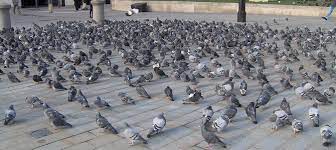
by Pigeon Patrol | Jun 21, 2021 | Pigeon Predators, Pigeons, Pigeons in the News, Raccoons, Sparrows, UltraSonic Bird Control
The theory that pigeons’ famous skill at navigation is down to iron-rich nerve cells in their beaks has been disproved by a new study published in Nature.
The study shows that iron-rich cells in the pigeon beak are in fact specialised white blood cells, called macrophages. This finding, which shatters the established dogma, puts the field back on course as the search for magnetic cells continues.
“The mystery of how animals detect magnetic fields has just got more mysterious” said Dr David Keays who led the study.
Dr Keays continued: “We had hoped to find magnetic nerve cells, but unexpectedly we found thousands of macrophages, each filled with tiny balls of iron.”
Macrophages are a type of white blood cell that play a vital role in defending against infection and re-cycling iron from red blood cells. They’re unlikely to be involved in magnetic sensing as they are not excitable cells and cannot produce electrical signals which could be registered by neurons and therefore influence the pigeon’s behaviour.
Dr Keays’s lab, based at the Institute of Molecular Pathology in Vienna, worked together with Dr Shaw from the University of Western Australia, and Drs Lythgoe and Riegler from the UCL Centre for Advanced Biomedical Imaging in London.
“We employed state-of-the-art imaging techniques to visualise and map the location of iron-filled cells in the pigeon beak” said Dr Mark Lythgoe.
The search for the actual mechanism that allows migratory birds, and many other animals, to respond to the Earth’s magnetic field and navigate around their environment remains an intriguing puzzle to be solved.
“We have no idea how big the puzzle is or what the picture looks like, but today we’ve been able to remove those pieces that just didn’t fit,” said Dr Keays.
Source
Pigeon Patrol Products & Services is the leading manufacturer and distributor of bird deterrent (control) products in Canada. Pigeon Patrol products have solved pest bird problems in industrial, commercial, and residential settings since 2000, by using safe and humane bird deterrents with only bird and animal friendly solutions. At Pigeon Patrol, we manufacture and offer a variety of bird deterrents, ranging from Ultra-flex Bird Spikes with UV protection, Bird Netting, 4-S Bird Gel and the best Ultrasonic and audible sound devices on the market today.
Voted Best Canadian wholesaler for Bird Deterrent products ten years in a row.
Contact us at 1- 877– 4– NO-BIRD, (604) 585-9279 or visit our website at www.pigeonpatrol.ca
Pigeon/Pigeon Patrol / Pigeons Roosting / Vancouver Pigeon Control /Bird Spikes / Bird Control / Bird Deterrent / Pigeon Deterrent? Surrey Pigeon Control / Pest /Seagull deterrent / Vancouver Pigeon Blog / Birds Inside Home / Pigeons in the cities / Ice Pigeons/ What to do about pigeons/ sparrows , Damage by Sparrows, How To Keep Raccoons Away, Why Are Raccoons Considered Pests/ De-fence / Pigeon Nesting/ Bird Droppings / Pigeon Dropping/ woodpecker control/ Professional Bird Control Company/ Keep The Birds Away/ Birds/rats/ seagull/pigeon/woodpecker/ dove/sparrow/pidgeon control/pidgeon problem/ pidgeon control/flying rats/ pigeon Problems/ bird netting/bird gel/bird spray/bird nails/ bird guard
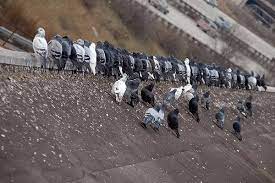
by Pigeon Patrol | Jun 21, 2021 | MBCA, pet bird, Pigeon Control, Pigeon Droppings, Pigeon Patrol's Services, Pigeon Predators
Hanging on roof and window ledges throughout the Bay Area, pigeon spikes serve as one of the many deterrents that protect local buildings from the oft-maligned birds.
Pets Gone Wild
San Francisco’s pigeons are feral “rock doves.” Ornithologists believe the pigeon was the first domesticated bird, originally prized in the Middle East 6,000 years ago for the delicious meat of its squabs and the fertilizing prowess of its waste. Pigeons are highly adaptable; they nest in a wide variety of locations and will eat almost anything.
Flying Rodent?
An estimated 3.5 million feral pigeons live in the Bay Area. Large populations also live in New York City; London; Seville, Spain; Venice; and New Delhi. The characterization “rats with wings” became popular after it was used in Woody Allen’s 1980 film, “Stardust Memories.”
Edgy Critters
Pigeons are edge-landing birds. When landing above ground, they land only on peaks or at perimeters, where they can use their claws to grip for stability. To deter pigeons from a building, only those areas need to be blocked.
No Stabbing
Many pigeon spikes are not pointed. Birds Away/Pigeons Away, a 25-year-old company based in Concord, uses only blunt-ended prongs. It decided spikes were inferior to prongs because they injured birds and snagged flying debris like large leaves, newspapers and plastic bags.
Feathered Hero
Domestic carrier pigeons have been used for centuries to transmit messages during wartime. An American bird, G.I. Joe, received a medal for his courageous flight in World War II, traveling 20 miles to safeguard the lives of British soldiers.
Winged Plague
Pigeons can transmit heart and kidney diseases to humans, as well as salmonella and encephalitis. They also carry parasites like ticks, mites, fleas and lice.
Artistic Decision
The de Young Museum is protected from pigeons by an invisible “shock track” on its edges that is charged with a low voltage.
Bird Brains
At the Balboa Park BART station, pigeons tried to nest between the spikes, but they got stuck and eventually starved. BART has also tried to deter pigeons with fake owls and rubber snakes.
Ugly and Injurious
Highly acidic pigeon feces can corrode paint and most metals. The droppings on sidewalks can also lead to liability issues, like slip-and-fall lawsuits.
Source
Pigeon Patrol Products & Services is the leading manufacturer and distributor of bird deterrent (control) products in Canada. Pigeon Patrol products have solved pest bird problems in industrial, commercial, and residential settings since 2000, by using safe and humane bird deterrents with only bird and animal friendly solutions. At Pigeon Patrol, we manufacture and offer a variety of bird deterrents, ranging from Ultra-flex Bird Spikes with UV protection, Bird Netting, 4-S Bird Gel and the best Ultrasonic and audible sound devices on the market today.
Voted Best Canadian wholesaler for Bird Deterrent products ten years in a row.
Contact us at 1- 877– 4– NO-BIRD, (604) 585-9279 or visit our website at www.pigeonpatrol.ca
Pigeon/Pigeon Patrol / Pigeons Roosting / Vancouver Pigeon Control /Bird Spikes / Bird Control / Bird Deterrent / Pigeon Deterrent? Surrey Pigeon Control / Pest /Seagull deterrent / Vancouver Pigeon Blog / Birds Inside Home / Pigeons in the cities / Ice Pigeons/ What to do about pigeons/ sparrows , Damage by Sparrows, How To Keep Raccoons Away, Why Are Raccoons Considered Pests/ De-fence / Pigeon Nesting/ Bird Droppings / Pigeon Dropping/ woodpecker control/ Professional Bird Control Company/ Keep The Birds Away/ Birds/rats/ seagull/pigeon/woodpecker/ dove/sparrow/pidgeon control/pidgeon problem/ pidgeon control/flying rats/ pigeon Problems/ bird netting/bird gel/bird spray/bird nails/ bird guard
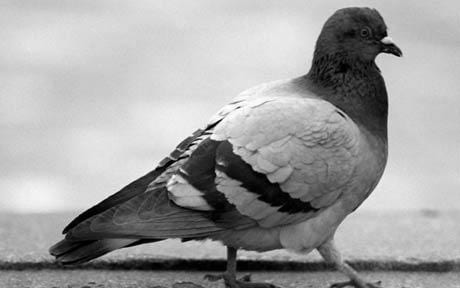
by Pigeon Patrol | Jun 14, 2021 | Bird Deterrent Products, Bird Netting, Pigeon Predators, Pigeon Spikes, Pigeons, Pigeons in the News
If you could ask any animal ‘A penny for your thoughts’, which would you choose? When the question occurred to Fumihiro Kano from Kyoto University, Japan, he decided to focus on the great apes. ‘Eye movement is a good indicator of attention, cognition and emotion’, he says, explaining how he uses an infrared eye tracker to monitor ape eye movements to understand their thought processes. However, after a decade, Kano decided to switch from working with apes to investigating the minds of homing pigeons through their eyes. Bird eyes are almost fixed in their sockets, allowing Kano to infer where they are gazing from the movements of their heads alone. Teaming up with fellow primate biologist – Dora Biro from the University of Oxford, UK, who also has a passion for researching pigeon navigation – Kano set about designing a head sensor that would allow him to measure the birds’ head movements to test how they use their eyes while homing through the Oxfordshire countryside.
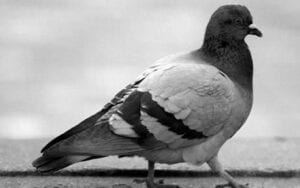
Combining a GPS tracker, microcomputer and battery in a pigeon-sized backpack, Kano added an inertial measurement unit, which could track the bird’s head movements using a gyroscope and accelerometers, mounted on a custom-built mask. ‘Constructing the mask was actually the most challenging, but most fun, part of this study’, smiles Kano, who frequently visited the local craft store in Oxford to try out different materials until he had perfected the wire, felt and elastic band design. ‘The most important thing was to design the mask so that it did not interfere with the bird’s breathing when flying’, he recalls, adding, ‘Most of them were okay to wear it, but some of them didn’t seem to like it and immediately took it off, so we continued to modify the design until they were comfortable’. Once Kano, James Walker, Takao Sasaki and Biro were confident that the pigeons were content to fly wearing their new accessories, the team drove the birds 4 km up the road and then released them individually for the 10 min flight home.
Downloading the data after each bird returned, the team was delighted to see every detail of the head manoeuvres, in addition to the GPS plot of the return flight path. The first thing that they noticed was how stable the birds’ heads were; ‘it is like a high spec gimbal’, says Kano, describing how the heads of the animals barely wobbled. It was also clear that the pigeons were actively glancing from side to side, scanning the landscape, during their solo flights; ‘[They] moved their heads far more than necessary for manoeuvring flight’, says Kano. In addition, the birds reduced their head movements when approaching landmarks, including a main road and a railway line, ‘which indicates that they indeed “see” them to navigate’, says Kano. Finally, the scientists dispatched the birds in pairs to learn more about how they use their eyes when flocking, and noticed that the birds reined in their head movements when flying with a partner, ‘indicating that the flock-mate is a key visual cue that they need to pay attention to’, he says.
It seems that pigeons keenly observe their surroundings, especially when flying solo, and the team is eager to incorporate a tiny camera into the sensor to get a true bird’s-eye view of the world, with the hope of eventually taking a glimpse into the minds of other bird species.
Source
Pigeon Patrol Products & Services is the leading manufacturer and distributor of bird deterrent (control) products in Canada. Pigeon Patrol products have solved pest bird problems in industrial, commercial, and residential settings since 2000, by using safe and humane bird deterrents with only bird and animal friendly solutions. At Pigeon Patrol, we manufacture and offer a variety of bird deterrents, ranging from Ultra-flex Bird Spikes with UV protection, Bird Netting, 4-S Bird Gel and the best Ultrasonic and audible sound devices on the market today.
Voted Best Canadian wholesaler for Bird Deterrent products ten years in a row.
Contact us at 1- 877– 4– NO-BIRD, (604) 585-9279 or visit our website at www.pigeonpatrol.ca
Pigeon/Pigeon Patrol / Pigeons Roosting / Vancouver Pigeon Control /Bird Spikes / Bird Control / Bird Deterrent / Pigeon Deterrent? Surrey Pigeon Control / Pest /Seagull deterrent / Vancouver Pigeon Blog / Birds Inside Home / Pigeons in the cities / Ice Pigeons/ What to do about pigeons/ sparrows , Damage by Sparrows, How To Keep Raccoons Away, Why Are Raccoons Considered Pests/ De-fence / Pigeon Nesting/ Bird Droppings / Pigeon Dropping/ woodpecker control/ Professional Bird Control Company/ Keep The Birds Away/ Birds/rats/ seagull/pigeon/woodpecker/ dove/sparrow/pidgeon control/pidgeon problem/ pidgeon control/flying rats/ pigeon Problems/ bird netting/bird gel/bird spray/bird nails/ bird guard


